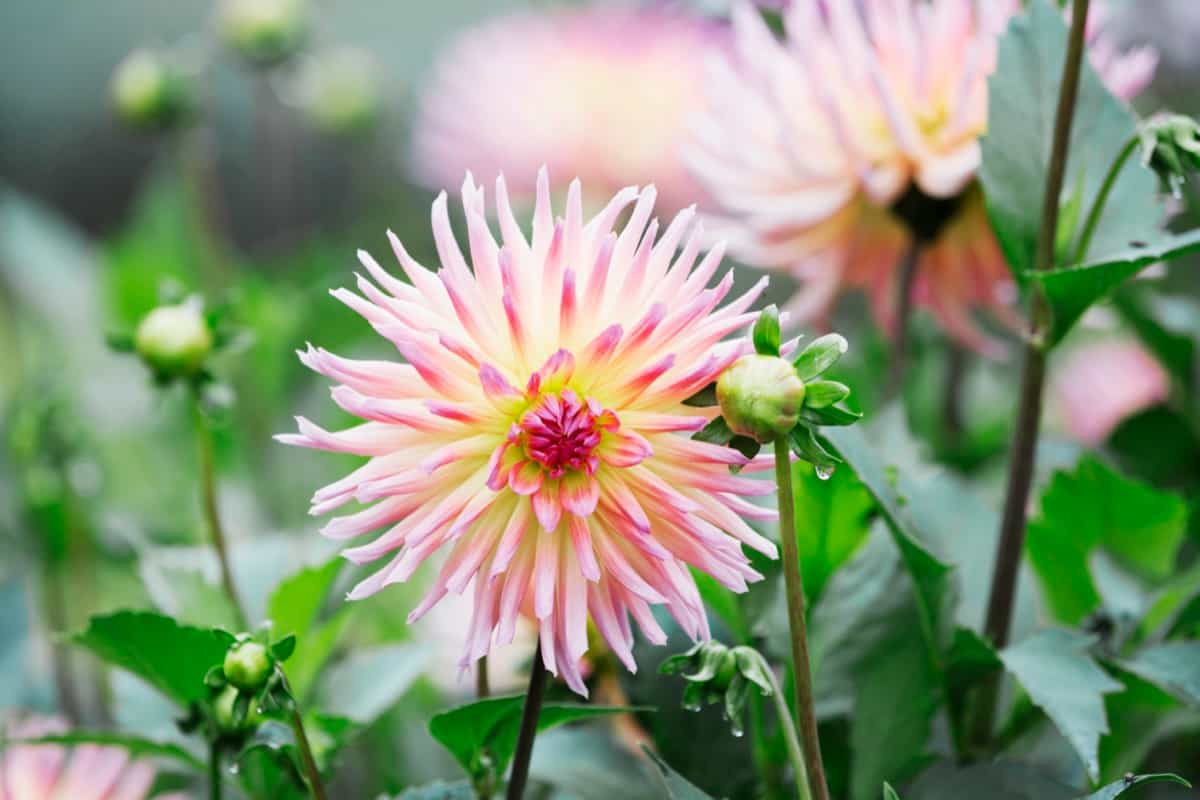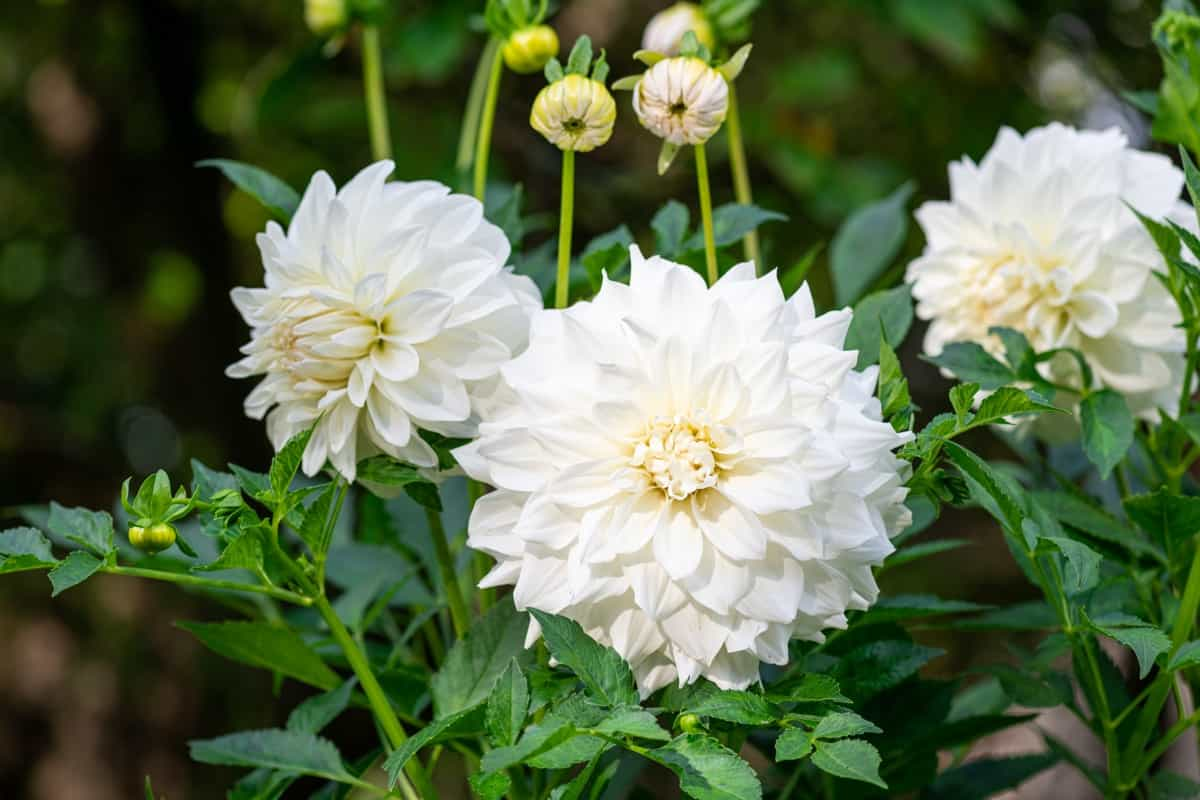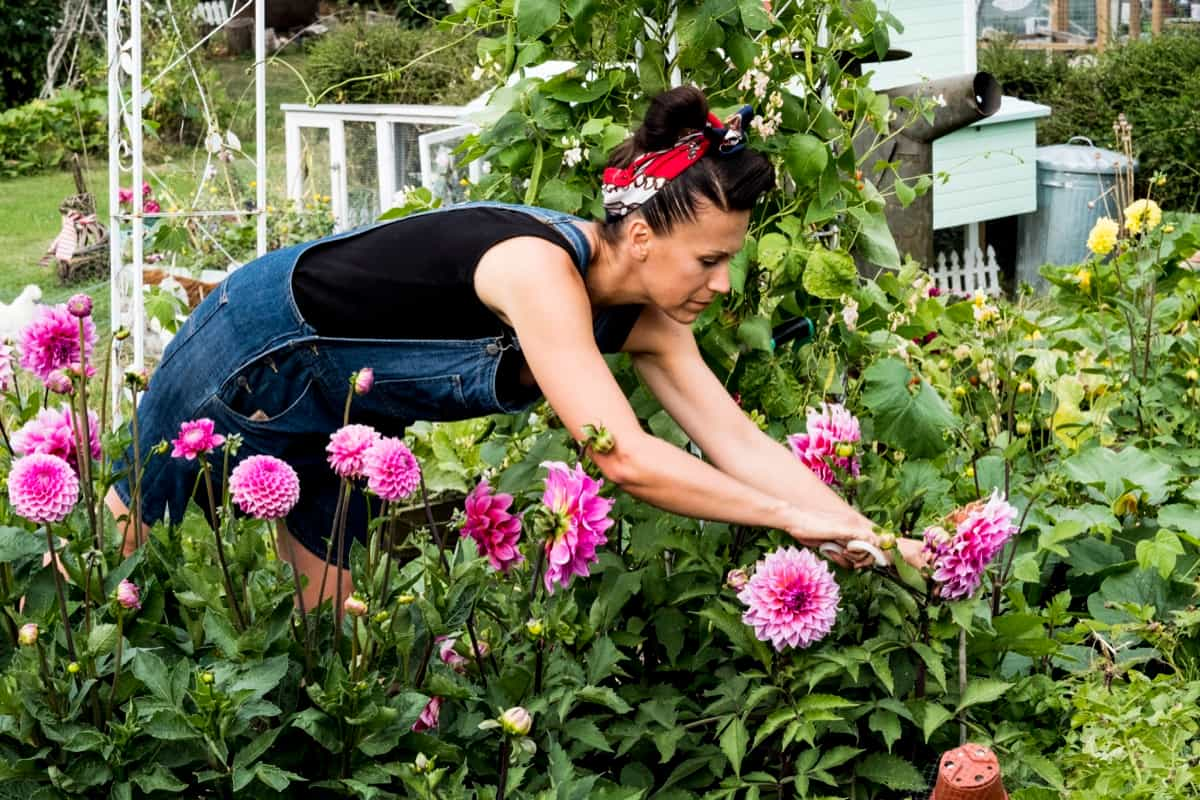Welcome to the world of Dahlia crop care and pest management. In this guide, we’ll explore effective natural and organic ways to ensure your Dahlia crops thrive while minimizing the use of chemical pesticides. To maintain the health and beauty of your Dahlias, it’s essential to understand the plant, practice eco-friendly gardening, and utilize safe, long-lasting techniques for growth and pest control.

How to Control Dahlia Pests Naturally
Common Dahlia Varieties
- Dinnerplate Dahlias: These are characterized by their enormous, plate-sized blooms in various colors.
- Cactus Dahlias: They make a striking arrangement and feature unusual, spiky petals.
- Anemone Dahlias: These dahlias have a distinctive appearance due to their flat petals encircling a central pompom.
- Decorative Dahlias: Perfect for cut flower arrangements, these flowers have colorful, completely double blooms.
- Ball dahlias: These small, globe-shaped blooms are ideal for borders.
Understanding Dahlia Pests and Diseases: Identifying Common Pests
Identifying and protecting your dahlia plants from common pests and diseases is essential. Aphids, which feed on plant sap, and spider mites, which cause discoloration and webbing on leaves, are two infamous pests. Meanwhile, a fungus called powdery mildew coats leaves in a fine, white powder. It takes constant attention to identify problems early.
Prevention is Key: Implementing Effective Strategies to Control Dahlia Pests
- Companion Planting: Planting companion flowers like marigolds, calendulas, and chrysanthemums can deter pests and promote biodiversity.
- Proper Watering: Avoid overwatering, which can lead to root rot and attract pests. Use mulch to maintain soil moisture.
- Soil Health: Improve soil quality with compost and organic matter to support strong, healthy plants that can resist pests.
- Crop Rotation: Change the planting location of your Dahlias annually to disrupt the life cycles of pests and diseases.
- Beneficial Insects: Attract natural predators like ladybugs and lacewings, which feed on common Dahlia pests.
Natural Remedies for Dahlia Pest Control: Benefiting from Companion Planting
Companion planting is a natural way to eliminate pests from dahlia plants effectively. For instance, when planted nearby, marigolds help repel aphids and nematodes. Nasturtiums can discourage aphids and whiteflies with their peppery scent. These aromatic companions not only fend off pests but also enhance soil health.
In case you missed it: How to Control Ginger Pests Naturally: How to Get Rid of Them with Natural and Organic Treatment

Organic Treatments for Dahlia Pests: Utilizing Safe and Environmentally Friendly Solutions
- Neem Oil: Neem oil serves as a natural insect repellent and disrupts pests’ feeding and life cycles.
- Copper Fungicide: Use copper-based fungicides to combat fungal diseases like powdery mildew.
- Insecticidal Soap: Insecticidal soaps control soft-bodied pests like aphids and spider mites while being gentle on the environment.
Creating a Healthy Garden Ecosystem: Attracting Beneficial Insects to Combat Dahlia Pests
- Plant nectar-rich flowers like marigolds, zinnias, and daisies to provide food sources.
- Maintain diverse plant species to offer various habitats and encourage biodiversity.
- Attract beneficial insects- ladybugs, lacewings, and parasitic wasps, which feed on dahlia pests.
- Avoid using chemical pesticides that can harm these helpful insects.
- Provide water sources and reduce light pollution at night to support a balanced ecosystem that safeguards your dahlia flowers naturally and effectively.
Homemade Pest Repellents: DIY Recipes for Dahlia Pest Deterrence
You may make your natural insect repellents at home. Spraying dahlia leaves with a solution of one part garlic to two parts water, for instance, can repel aphids and spider mites. Furthermore, dahlia plants can be protected against crawling pests by applying diatomaceous earth around them.
Physical Barriers and Traps: Natural Methods to Protect Dahlia Plants
- Row Covers: Use row covers to protect dahlia plants from flying pests like whiteflies and aphids.
- Copper Barriers: By encircling containers or beds with copper tape, you can keep slugs and snails, common dahlia pests, at bay.
- Sticky Traps: By capturing flying insects, yellow sticky traps lower the possibility of infestations.
Soil Management Techniques: Enhancing Soil Health for Dahlia Pest Prevention
- Amending Soil: Add organic matter like compost to improve soil fertility and structure.
- Crop Rotation: Change the planting location to disrupt the life cycles of soil-borne pests.
- Beneficial Nematodes: Introduce beneficial nematodes to control soil-dwelling pests naturally.
- Proper Drainage: Ensure well-drained soil to prevent waterlogging, which can attract pests and diseases.
- pH Balancing: Maintain the soil’s pH at an optimal level for Dahlias (around 6.5) to prevent pest issues.
In case you missed it: Rose Flower Chaffer Beetle Pest Management: Symptoms, Treatment, Chemical, Biological, and Organic Control

Integrated Pest Management (IPM) for Dahlia: A Comprehensive Approach to Pest Control
IPM for dahlias involves a holistic strategy combining multiple tactics to manage pests while preserving the environment
- Pest Identification: Accurate identification of dahlia pests is the foundation of IPM.
- Monitoring: Regularly inspect your dahlia garden to detect pest presence early.
- Cultural Practices: Maintain proper spacing, watering, and soil care to create a less attractive environment for pests.
- Biological Controls: Encourage beneficial insects and natural predators to control pest populations.
- Mechanical Controls: Handpick and remove pests when possible or use traps to manage their numbers.
- Record-keeping: Maintain records of pest activity and management efforts to refine your IPM strategy.
Dahlias Pest Control with Natural and Organic Treatment
| Pest/Disease | Organic Treatment |
| Aphids | Use a strong stream of water to dislodge aphids from plants. Introduce beneficial insects like ladybugs or lacewings. |
| Powdery Mildew | Prune affected leaves and maintain good air circulation. Apply a copper-based fungicide. |
| Slugs | Create physical barriers like copper tape to prevent slugs from reaching plants. Handpick slugs and use traps. |
| Spider Mites | Spray affected plants with a strong stream of water to dislodge mites. Introduce predatory mites as natural controls. |
| Dahlia Virus | Remove infected plants to prevent the spread of the virus. Practice strict hygiene in the garden. |
Frequently Asked Questions (FAQ) on Controlling Dahlia Pests Naturally
What are Dahlias?
Dahlias are flowering plants known for their vibrant and diverse blooms. They come in various sizes and colors, making them popular in gardens and floral arrangements.
How Do I Choose the Right Dahlia Variety for My Garden?
The choice of dahlia variety depends on your garden’s size, climate, and personal preferences. Consider factors such as bloom size, color, and height when selecting the right dahlia for your garden.
In case you missed it: How to Control Terrace Garden Pests Naturally: How to Get Rid of Them with Natural and Organic Treatment

When Do Dahlias Typically Bloom?
Dahlias generally bloom from mid-summer to the first frost, depending on the climate and the specific variety.
Conclusion
To ensure the health and beauty of your dahlia plants, use natural and organic methods to control pests. Understand common pests, select appropriate varieties, practice prevention, employ natural remedies, and follow organic treatments. Manage your garden ecosystem to attract beneficial insects, make homemade pest repellents, and implement physical barriers and traps.
Enhance soil health and adopt integrated pest management (IPM) for holistic pest control. With these eco-friendly approaches, you can protect your dahlia crops while promoting a thriving and environmentally conscious garden.
- Beneficial Insects in Pest Management
- Natural Solutions for Pest Control in Flower Gardens
- Types of Fungicides Used in Agriculture
- Common Issues in the Fruit Development Stage of Pomegranate Farming
- Fruit Development Issues in Papaya: Easy Solutions and Treatment
- Soil-Borne Diseases and How to Protect Your Plants
- Practices to Prevent Disease Spread in the Garden
- From Wilted to Thriving: How to Treat Root Rot Naturally in Houseplants
- Natural Remedies to Cure Brown Spots on Fig Tree Leaves